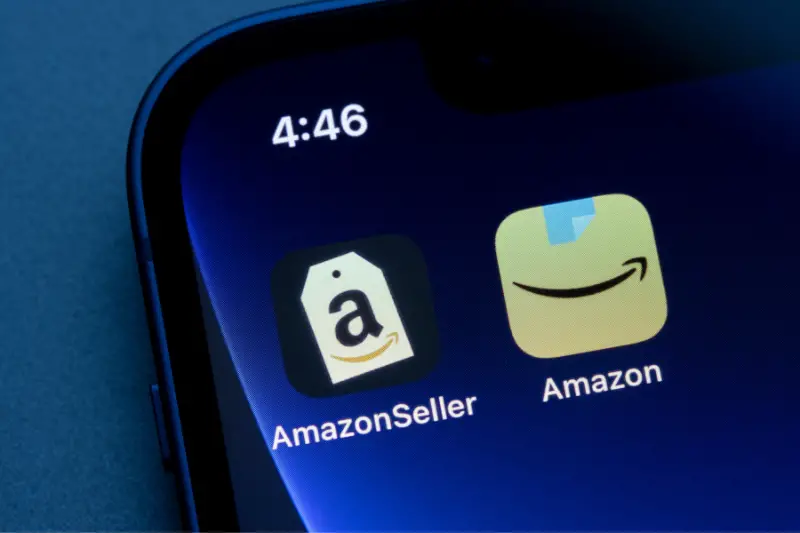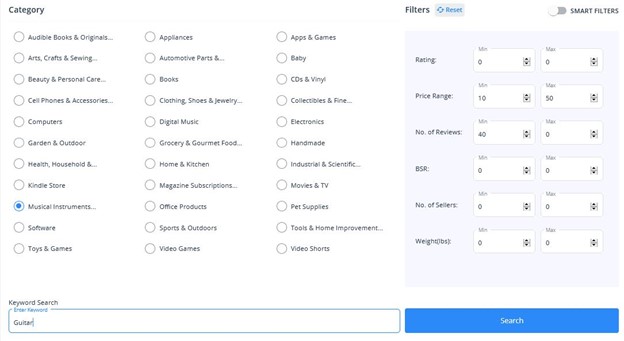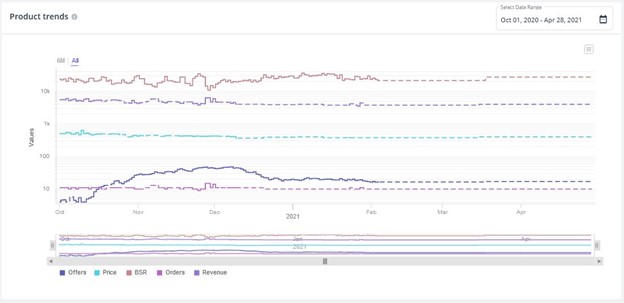Click here to get this post in PDF
Finding a profitable product is the first step to becoming a successful Amazon FBA seller. If the product is not in demand, there is very little you can do to change your fortunes. That is why you cannot leave amazon product research to luck. It has to be based on relevant and reliable data.
So, how do you go about finding the perfect product? What niche should you target? Let’s take a look at the product research process.
Getting started with Amazon product research
The product idea
Identify a niche and monitor multiple products that you could sell on the platform. Your decision should be based on the latest Amazon trends. You can discover what customers are buying by using Amazon listing optimization. You can even filter the results by category.
You can also use SellerApp’s Product Ideas feature. It will highlight the latest trends on the platform and give you an opportunity score based on how likely the product will succeed on Amazon. You also get vital data about the number of orders, estimated revenue, BSR rank, and physical attributes of the product. Therefore, it is the ideal way to identify promising products.
Pro tip: Be careful when picking a niche. If you pick a highly obscure niche, you may find that there is very little demand for your products!
Dig into the data
Once you identify potential winners, it is time to analyze the data. These are the factors you need to look out for:
- Good demand: More the demand, the higher the potential revenue.
Healthy profit margins: A product’s cost price is not the only expenditure involved. Take all costs into consideration when calculating margins. Amazon FBA sellers can use SellerApp’s free Amazon FBA calculator to quickly find the profit margin. - Low competition: Fewer the competitors, the easier it is for you to capture a large chunk of the market.
- Not seasonal: Ideally, you need to look for products with demand throughout the year. Seasonal products do not give you consistent cash flow, which is why it is recommended to avoid them early on.
- Negligible barriers to entry: Avoid restricted categories unless you have prior approval from Amazon to sell in those categories. Make sure you are compliant with local laws as well. If it is a complicated legal situation, sell something else!
It is recommended that the product:
- It’s lightweight, small, and compact: This will help you save on shipping and storage costs. Additionally, they are easier to handle.
- Promotes impulse purchases: Most customers are likely to think long and hard before making an expensive purchase. In these cases, customers often prefer to buy from established brands. That is why a new seller needs to list products that are not expensive. Experts recommend selling products priced anywhere between $10 to $60 for precisely this reason.
You can find relevant data by using SellerApp’s product research feature. Using advanced filters, you can refine your search based on category, price, ratings, reviews, BSR, competition, and weight. With a simple keyword search, you can find similar products.
Once you find relevant results, track them to get more actionable insights.
- Sales: The higher, the better.
- BSR: A good BSR rank is an indication of good demand. If BSR suddenly dips, it could be an indication that the product is seasonal. Keep monitoring the product to identify major fluctuations.
Orders: Consistent revenue does not mean consistent demand because prices are subject to change. The number of orders is another way to keep tabs on demand.
Ideally, the metrics should be improving or at least consistent.
Establish profitability
After taking average sales and revenue into consideration, you need to find whether the product can be sold profitably. To do this, you need to figure out how much money it will cost you to acquire or manufacture the product.
The easiest way to do this is by using SellerApp’s product sourcing tool. This will help you find detailed product information from the best suppliers on Alibaba.com. Calculate the average product price from all the top suppliers and use that information as the estimated cost price of the product.
Next, you need to calculate the shipping costs, along with any other logistical expenditures. Product weight and volume are factors that affect storage and shipping costs, so keep an eye on that as well!
If you are an FBA seller, you can use the FBA calculator to discover your estimated margins.
Once you have crunched the numbers and zeroed in on a product, you can use the product sourcing tool to get in touch with suppliers and source your product.
To learn about Amazon FBA Calculator check out this video.
List your product and start selling!
Once you have your product, you can start creating your product listing. The right product can only get you so far. You need to optimize your listing, find relevant keywords, create a fulfillment strategy, start advertising with Amazon PPC, and so much more to guarantee returns. Product research is only the first step.
To ensure that you make data-informed decisions throughout your seller journey, you can use SellerApp. Its ML-powered algorithms give you actionable insights and reliable data to help you supercharge your sales.
Seven Essential Tips Before Selling on Amazon
Author’s Bio:
Arishekar is the Head of Marketing at SellerApp and specializes in digital marketing, in addition to website keyword optimization for search engines. His areas of expertise include enhancing the organic ranking of web pages on search engines with innovative SEO strategies and online promotions.




